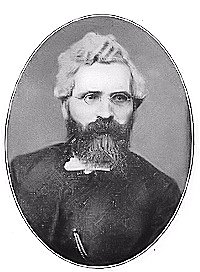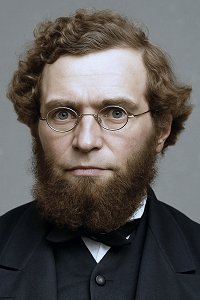Introduction

Born: December 22, 1822, Tanrhiwfelen, Aberystwyth, Wales.
Died: May 6, 1877, Fron, Caernarvonshire, Wales.
Buried: Caeathro Cemetery, Wales.


Born: December 22, 1822, Tanrhiwfelen, Aberystwyth, Wales.
Died: May 6, 1877, Fron, Caernarvonshire, Wales.
Buried: Caeathro Cemetery, Wales.

Roberts is often confused with another Welsh musician of the same name, John Roberts (1807–1876).
When Roberts was five months old, his family moved from Tanrhiwfelen to a house on the way to Penllwyn; in 1829 they moved to Pistyllgwyn, near Melindwr. At age 20, Roberts went to live in Aberystwyth, and in 1852 moved to Liverpool and eventually became editor of the Amserau. In 1858 he moved to Aberdare, South Wales, and became editor of Gwladgarwr.
While in South Wales, Roberts began preaching at monthly services in the district of Glamorgan. In 1859 he accepted the post of minister at the church at Panttywyll Merthyr Tydfil. In August 1861, he was ordained in Bethlehem Chapel and served until called to Capel Coch in Llanberis. He was ordained there August 29, 1865, and remained until retirement in 1869.
When Roberts left Bethlehem Chapel at Pantywyll for Capel Coch, the congregation wanted to commemorate his contribution to music in the town, so a commemorative stone plaque was commissioned and placed in the chapel. It was taken from Bethlehem Chapel before the Chapel was demolished, and transferred to Soar-Ynysgau Chapel Merthyr.
Roberts was a teacher, editor, minister, journalist, lecturer, poet, composer and conductor, traveling all over South Wales. In 1859 he set up a choral union in Aberdare, the center of the South Wales coal field. He was an imaginative teacher, and created methods of improving Welsh choral singing. He was also an accomplished musician, conducting music festivals and serving as judge at the local eisteddfodau. Like many others, he was also a fervent Nonconformist for whom singing was an expression of a pure and godly way of life.
His 1859 Llyfr Tonau Cynulleidfaol demonstrated his respect for classical musical forms. In the same year he conducted, from Llyfr Tonau, the first hymn singing meeting that may be properly be called a Cymanfa Ganu. Congregations were encouraged to learn tunes from the Llyfr Tonau for a specific day when several congregations from one district would meet to sing under a guest conductor, often Roberts himself.
Since Llyfr Tonau was a book of tunes without words, the emphasis was mainly on the music, the goal being to raise the standard of Sunday song. It was stressed that the meeting was not for choirs, but for whole congregations. Roberts’ tunes were severe and unembellished, but later, partly due to the influence of Sankey and Moody, singing became less musically rigorous and more emotional, and consequently more popular.
From the 1880s, annual festivals were established throughout Wales and beyond. As time wore on, they became further removed from the needs of Sunday worship. The Cymanfa Ganu, in becoming a national institution, ceased to be the vehicle of musical education and reform which its founders had envisaged. However, the sound of Welsh hymns can still inspire even today.
After Roberts’ death, a memorial fund was set up from private donations and collections made at a number of Cymanfaoedd Canu in North and South Wales. It was called the Ieuan Gwyllt and Tanymarian Memorial Prize:
A Prize from the income of the Ieuan Gwyllt and Tanymarian Memorial Prize shall be awarded for a composition of choral music with or without accompaniment submitted in competition for the Prize by a Welsh musician. The work must be set to Welsh words suitable for performance at religious and musical festivals.
Biography courtesy of Carl Llewellyn